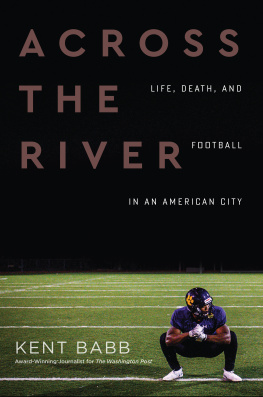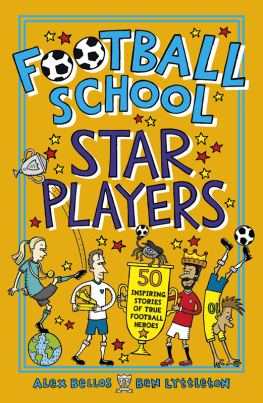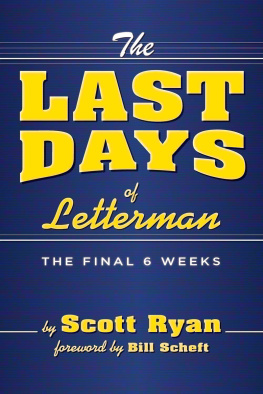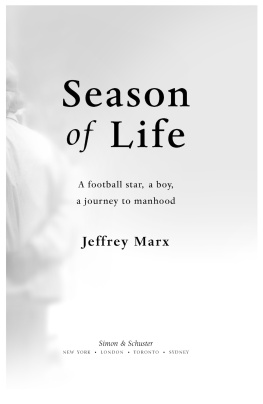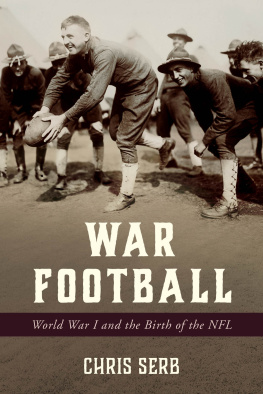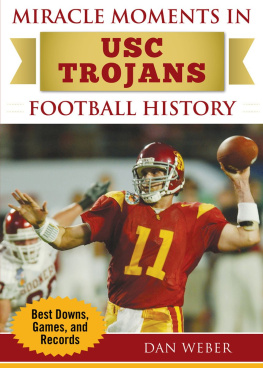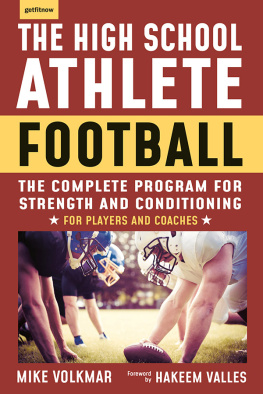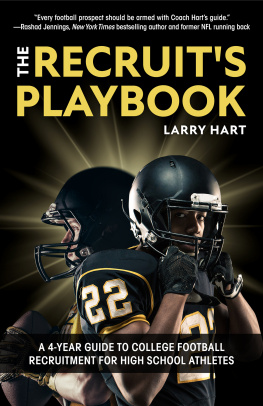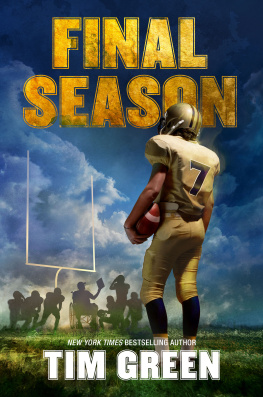Contents
Guide
Contents
We were on a long bus ride, headed from New Orleans to a road game in Monroe, Louisiana. The man next to me saw a Mississippi cotton field through the window and removed his earbuds.
I was enjoying the ride until I saw that shit, Marvin Rose said. I could still hear the beat of his Earth, Wind & Fire playlist.
Marv is sixty-three years old, a longtime military man and lifelong civil servant. A few years ago his daughter died in a car accident, and he found refuge as a volunteer on the football coaching staff at Edna Karr High School on the West Bank of New Orleans. Despite his pain, Marv is an incurable prankster and trash talker. I spent parts of a year embedded with the Karr program, and Marvs sense of humor is one reason I usually sat next to him. Another was a mutual curiosity about, and willingness to discuss, our obvious differences: among them that Marv, like every player and coach on the two team buses, is Black. I am white.
When I first saw the cotton, and hearing racial slurs was just part of his childhood.
So many years later, he shared this perspectivea very different one from minefrom a bus. He always sits in the front row.
I almost didnt ask him about it. Though Im a reporter with The Washington Post and a naturally curious person, discussing race often feels taboo, and part of me wanted to let it go. A different part reminded me that I wasnt just on any team bus. I was on their bus, and to not ask and learn wouldve been a missed opportunity, and a violation of why I was here in the first place.
Throughout the 2019 season, I spent time on Karrs sidelines and in staff meetings, in head coach Brice Browns pickup truck before games and on the team bus after them, with players and coaches on some of their best and worst days. We spoke often about race and racism, along with similarly complex topics such as identity, mental health, and the criminal justice system. I visited murder scenes, graveyards, jailhouses. I interviewed politicians, grieving relatives, and homicide detectives. I consulted with three local historians and a New Orleansbased crime analyst named Jeff Asher.
Those experiences, and this book, expand on a 2018 article I had written for The Post about how Brown and the Karr program were using football to teach life and survival skills to young residents of a city besieged by gun violence. in 2016, an eighteen- or nineteen-year-old Black male was fifty-six times more likely to be gunned down than the national average (Asher provided this statistic, as he did many others youll find in the pages ahead).
Even while working on that original piece, I was struck by how unflinchingly honest Brown is when it comes to his surroundings and in how he speaks to his players, even with a reporter present. I have written about sports, often spotlighting how they intersect with society and culture, for more than two decades. In general, coaches and athletes want to show you the most sanitized versions of themselves, often attempting to conceal their miscalculations, mistakes, and fears. I assume they believe this projects strength, supposedly a core tenet of leadership. But I think it masks not just reality, but humanity as well. No matter our backgrounds, imperfection is something we all have in common, even if we arent typically comfortable saying it out loud.
To an almost jarring degree, especially given his profession, Brown rejects pretense and inauthenticity. He expects the same of his players and staff. Within minutes of my arrival in August 2018, a senior running back was telling me about the first time he broke into a house. A top assistant coach was sharing an anecdote about how hed sold marijuana and pills before taking a coaching job at Karr. Brown, whose journey and leadership philosophy I have come to deeply admire, admitted to me that hes driven not by winning games or championships, but by a deep fear that someone else he loves will be cut down by gunfire.
Across the Mississippi River from New Orleanss tourist track is a football program and a school and a world that seemed almost unbelievable before I first crossed the bridge. Its easy to pretend poverty isnt as bad as the news media says, that no matter where you come from, a college education and career success are within easy reach as long as you pull yourself up by your bootstraps and study and work hard. Its especially easy to think that if you look like me, and I must confess here that, regardless of my curiosity and work, I had been content for years to pretend communities like this didnt exist in the United States.
I want to show you this world, and I want you to see it as I did: unfiltered and unpolished. For a time, I considered using pseudonyms when referencing Karrs players, many of whom are younger than eighteen. After all, part of my personal oath when setting off on this exploration of a marginalized community, where some residents have it hard enough, was to do no harm. But Brown and others insisted that I change nothing. They asked that I show their realities, obstacles, and methods precisely as they are. Therefore, no names have been changed and no speech has been modified.
Some of the language is coarse and may be uncomfortable or even offensive to readers. This would include the occasional use of the N-word by players and coaches. I, and my editors at HarperOne, spoke at length about the right way to handle thisinfluenced by my belief and policy that no white person should ever use this word, spoken or in print. We agreed it is not my place to censor language, but because this is the most divisive and painful word in the English language, we also agreed to use dashes instead of spelling out this word. Do no harm, after all.
This book is a work of nonfiction journalism, and everyone who participated did so with the understanding that their words and actions were on the record. The use of quotation marks signals that the contained remark is written precisely as it was spoken. Its impossible for me to fully appreciate the relationship between Karrs players and coaches, so I avoid judgment in my writing. Other than this authors note and the acknowledgments, I also avoid use of the first person. This isnt my story, after all. Its theirs.
The story unfolded throughout 2019, before the onset of the novel coronavirus pandemic and the murder of George Floyd. But much of this book was written with those events, and their respective aftermaths, as a backdrop and through the privileged filter of a white mans eyes.
I cannot know why Brown and others granted me such exceptional access, though I suspect it was partly because of my skin color. Brown does almost nothing without premeditation, and some Karr players had never metand certainly hadnt held a meaningful conversation withsomeone of a different race or completely different set of experiences. One day I was reminded of these differences during a text exchange with another assistant coach. I had expressed sympathy about the plight of Joe Thomas, a Karr player youll meet. Dont feel bad for him, the coach wrote. Just get his story out.
I have done so thoroughly and objectively. The overwhelming majority of the reporting is material I personally witnessed. In a small number of examples, scenes and one-off quotations have been re-created with the assistance of court and police documents, credible news reports, and/or accounts by multiple individuals who were directly involved (most instances of this are exhaustively referenced, with additional context, in the Notes and Citations section in the back of the book). With permission, I recorded dozens of hours of audio that included interviews, pre- and postgame speeches, and dialogue. In the handful of times when something is attributed to an unidentified source, these individualswhose identities I knewwere granted anonymity in print because we agreed the topic was highly sensitive.

